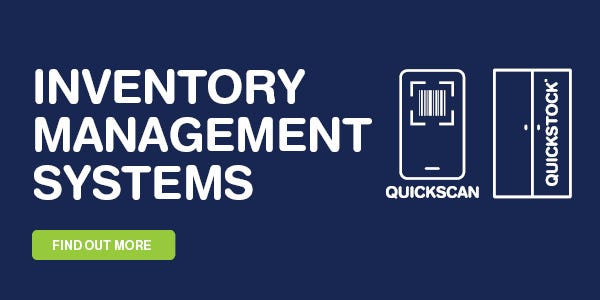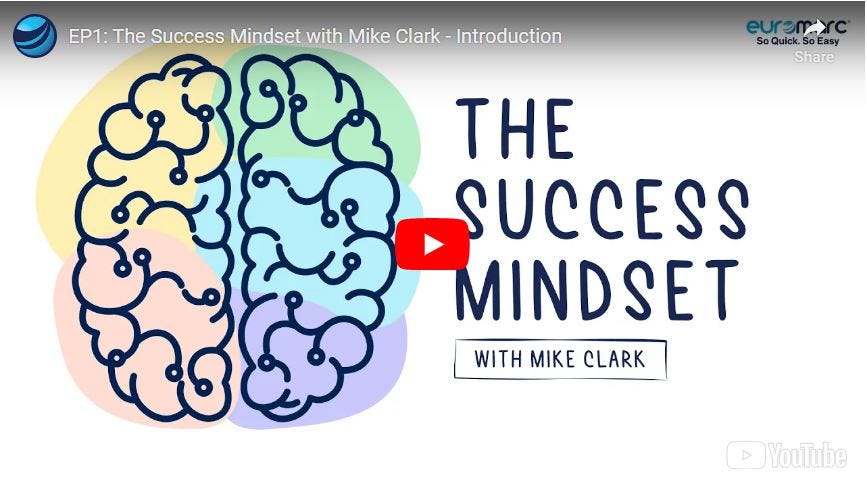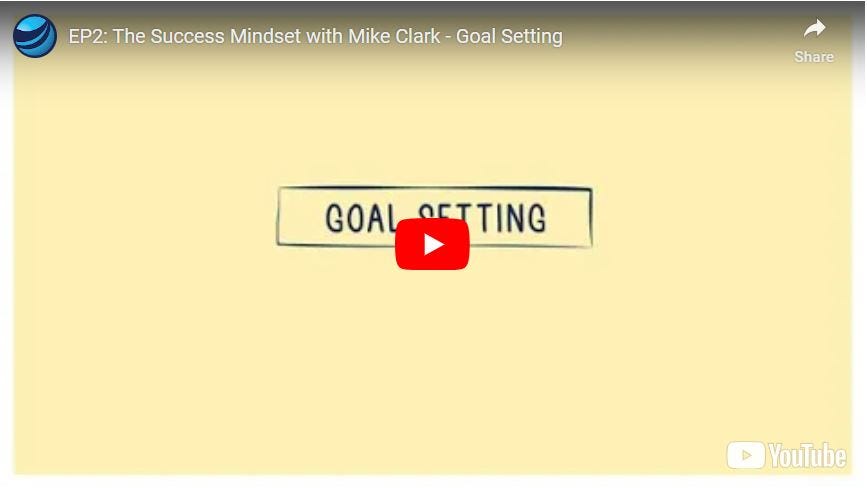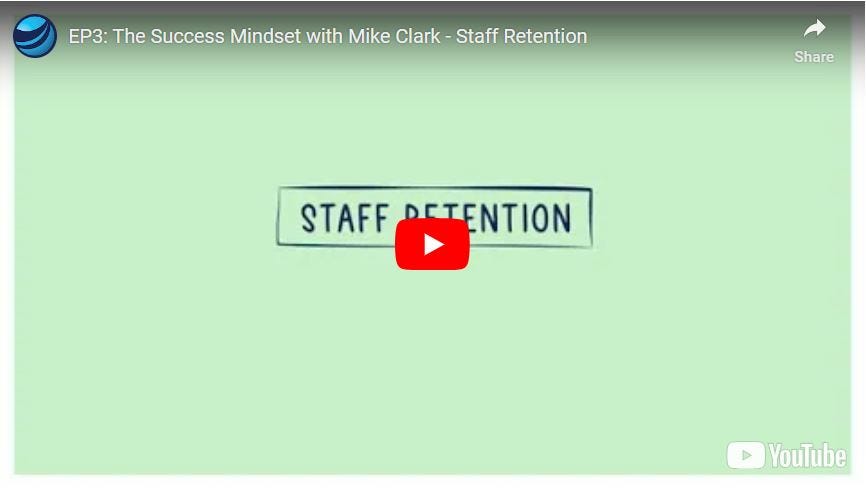EP6: The Success Mindset with Mike Clark - Approaching Change
People want to be a part of something! In the final episode Mike talks about how to use ADKARE to help give staff the information and Knowledge they need to be a part of and contribute to the change. Empowering the team to pickup and run with change.
Hello, everyone. For the final episode, we're discussing how businesses can best approach change. I think this is a really good topic. Because to be able to implement any of the suggested tools or processes that will make our businesses a success, we need to be willing to put the effort in to make the changes and have a team that's willing to jump on board too. So, Mike, in your experience, how can businesses overcome the fear of the unknown and get their teams on board into something new?
Fabulous question, Andy. And actually one of the incredible things with that is that you can actually use the fear to start the journey. And one of my favorite things to do with businesses is to say to them, what's the worst that could happen if this went wrong? And what would the cost of that be? And use it as a decision making going-- well, is it worth it?
Are we prepared to take that level of risk. Because change inherently is risk. And there's a risk management element inside of that. And so what we want to be doing is for any business considering change, is to look at, well, what are the benefits and what are the risks. And if we can get a business to do that, then we can start the change journey.
And journey is the right word because it doesn't just happen overnight. There's no overnight successes. You don't just go from here to there. It's actually something that you've got to bring people along with.
And one of my favorite models to do this with is a model called ADKARE. It stands for making people Aware that there is change happening, that you're considering change, that you're going to be doing change, and with that then creating a Desire within them to actually want to be a part of the change, to understand why they're doing it, and how it's going to benefit them, benefit the business, benefit the clients. Once the people have a desire, then we've got to check that they've got the right Knowledge that they need and the right skills that they need to help implement that change and to be a part of it. Because when people lean in and be a part of the change, then they buy in to the change that's happening.
And once you've done that, you then that checking in of the skills, of what we call the Ability-- do people have the ability, both physical, mental, emotional-- what it's going to take to go through change? Change requires us to be uncomfortable. And that's one of the reasons people don't like doing it, is because you step outside of your comfort zone. But as many people know, you only grow outside of your comfort zone.
So if you want to grow as a business, you have to get comfortable with being uncomfortable. And so we want to make absolutely sure that businesses are aware that people are going to be uncomfortable, that they're going to be uncomfortable. But that discomfort is part of the growth. Whenever there's change, the first bit is really messy and hard. And then the middle keeps being messy before you get the glorious end. You've got to go through the tough stuff.
The role of a team leader is to constantly Reinforce why it's happening. So ADKARE stands for making people Aware of why we need to change, getting the Desire from the team around that, give them the Knowledge that they need to have that buy in and that lean in, making sure they've got the Abilities, and then to constantly Reinforce the message. It's no good just saying it once. You actually need to continuously encourage and remind people.
And so when any organization is considering change, calculate the risk. Is it going to be worth it? And in that calculation, share with the team, get their buy in. It's really important that when you have decided you're going to change that you actually start to communicate.
We talked about the importance of communication. If you don't communicate and people pick up that there is going to be change, we create a vacuum. And the human mind, if there's a vacuum, it imagines the worst. And we get what we call crucializing, where people imagine the worst is going to happen. And we want to avoid this.
So you've decided we need to change. You've taken the risk as management. You're going, yes, we're going to do that. At the point where you've gone, yes, we're going to make this change, bring the team on board, get them to contribute towards the idea.
Let them know why it's going to be good. What was your rationale? What was your thinking? That's what creates the desire.
People want to be a part of something. And inside of being a part of something, people need clarity around what's their role going to be in that. People also then want to have the knowledge and skills. People don't like to feel stupid. Particularly when you've got intelligent people-- and engineering companies generally employ people have had to have a degree of skill, and learning, and knowledge.
And so no one wants to be put in a position where you're feeling dumb. And so we want to make sure that people have the knowledge, the information that they need to be a part of the change, to contribute to the change. And then at that point, if you've done those three things, you empower the team. And what happens is they then can pick it up and start to run with it. And your job then is just to make sure that they've got the ability to do it.
Do they have the equipment? Do they have the product? Do they have the skills to do what's needed? With the quick stock, for argument's sake, when you go and put that in, it's a way of doing things differently.
And I know that, for yourselves, one of the key things is to make sure that when it goes in, people understand why you're doing it, what the benefits are going to be. It's a really important thing-- how it's going to help them in their role, how it's going to help the customer, how is going to help the profitability of the business. And with that buy in, people then go, OK, I'm prepared to do things differently. People don't like doing things differently.
We like to get into our groove. But in doing things smarter, rather than harder, people kind of like that as well. And so when we can see, oh, this is helping me to win at work, then we get that more buy in. And then it's just constantly reinforcing the why was that good, and what else can we do?
Because you then create an improvement mindset in a team, where people go, oh, that was really smart. Well, if we could do that, what else can we do? And people start to look around and you begin to create a culture where people welcome improvement because they're not threatened by it.
Yeah, that's very good. So continuous change.
Absolutely.
Continuous improvement. That's really great advice, Mike. And I'm sure something everyone watching will have learnt from.
So this concludes our series. And I'd just like to say a big thanks to you, the viewers, and to you, Mike, for collaborating with us on the series. As always, your insights give us plenty to go away with, and there's loads of improvements to make.
Thank you so much, Andy. I really have enjoyed being a part of this. And it's been a real privilege. And I wish you and your viewers the very best of success as you go on from here.
Very good. That's it for The Success Mindset series. If you'd like to reach out to Mike Clark directly, follow the link below. And as always, we appreciate feedback. Feel free to reach out to us today. See you next time.
Mike Clark - Think Right
 Need assistance?
Need assistance?







